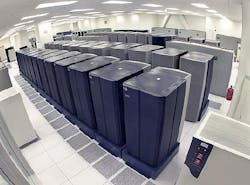Indeed, a recent survey conducted KPMG LLPi ndicates that increasingly more sophisticated customer demands (and simply more demands from customers overall) are forcing a wide variety of companies to adopt new business models and deploy more advanced technologies – all aimed to help improve productivity and better leverage financial resources.
KPMG’s poll of executives working at over 900 U.S.-based multinationals and asset management firms uncovered what the firm calls a “new alliance” between CFOs and CIOs, at purposing changing overall “business models” with the help of “big data.”"With the changing customer dynamic, CFOs and CIOs want the most strategic technologies to better manage the back office and the broader workforce in order to maintain margins in product or service delivery," noted Stephen Hasty, (seen at left) a KPMG partner who leads the firm's “Transformation” initiative, in statement released with the survey results.
"Technology that is geared to help drive performance in support of a customer-centric focus is taking center stage," Hasty said. "In fact, more and more company leaders see that emerging IT [information technology] advancements can drive business improvements to help them grow their business and maintain a competitive posture in the market, even amid rising costs for raw materials and narrowing margins for products."
He noted that 33% of those polled by KPMG said customer demand remained “the most common trigger” for transforming their business model, while technology and domestic competition were tied for second at 30% each.
Hasty added, by the by, that KPMG thinks customer demands can range from wanting mobile access to be able to shop and pay for products and services, to expectations of better product quality and improved access to customer-service questions.Why should trucking pay attention to such trends? Well Stephen Chase (seen at right), KPMG's service line leader for technology, pointed out that such “transformation” efforts are all about aligning and servicing not just customer demand, but optimizing supply chains, and managing risk and tax issues, as well as about having a better view of the financials and an improved strategic oversight of the workforce.
"The CFO and CIO are deploying emerging technologies to help their operational peers across the organization implement more sophisticated reporting and analytics to improve measuring how their units are performing," he emphasized. "Recent economic events underscored for many executives that transparency and agility has become increasingly important for businesses to predict and anticipate customer, competitive and market changes.
"Put simply, companies need to continually transform their organization's business model, using new and emerging technologies to help manage performance and cut costs," he said.Indeed, Hasty added that 63% of those polled said they are getting ready for, are undergoing, or have completed transformations say that they have a formal process for prioritizing business transformation initiatives.
"Undertaking broad changes to a business operating model – covering everything from the financial, risk and tax transformation, to human capital management, acquisitions and target markets – can create an operation that is innovative, agile, responsive to change, and focused on customers to get ahead of competitors and the marketplace," he pointed out.
Hasty added that technology opens up both the possibilities and pitfalls of cloud environments, social media interaction, data and analytics, and wide-scale mobility, creating entirely new industries and enterprises at the same time that they redefine how existing businesses operate and influence consumer choices.
"Constant change in the business environment requires internal and external capabilities with a deep and current knowledge of each component of a transformation effort – including market dynamics, regulatory and tax rules, technology advances, operational practices, and program implementation techniques," Hasty stressed. "Thus those individuals working closely within a program governance model can develop and execute on the optimal transformation strategy, helping to realize maximum value and return on investment."
Something for truckers to think about at the very least.




